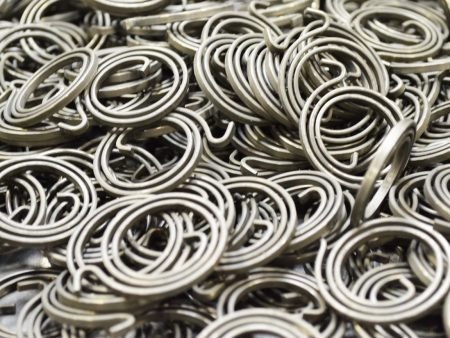Unlike compression springs and extension springs, torsion springs are designed to react against twisting motion or force. Torsion springs express mechanical energy through elasticity, meaning the spring action happens when it is twisted rather than compressed or pulled. The force can hold parts in place or store and release the mechanical energy. Depending on the application, torsion springs can be designed to work in a clockwise or counter-clockwise rotation, thus determining the direction of the wind.
Torsion springs are surprisingly found in a variety of applications that are in our daily lives, such as automotive suspension, garage doors and small devices that require pop-up or spring back features. These types of springs, which are expertly manufactured by Ajax Springs, are durable and dependable. Ajax offers torsion springs in a variety of lengths, rates, maximum load endurances, and wire and spring outside diameters.
Types of Torsion Springs
Torsion Bar Springs
Torsion bar springs are usually found in automotive applications and are used to support suspension components. These springs absorb shock and provide balance on unstable surfaces.
A torsion bar suspension is a torsion-bar spring attached to the body of a vehicle at one end and to a lever arm, which attaches to the axle of the wheel at the other. Its duty is to absorb road shocks as the vehicle goes over bumps and rough road surfaces. The sway bar, which is a part of many automobile suspensions that helps reduce the body roll of a vehicle during fast cornering, also uses the torsion spring principle.


Double Torsion Springs
Double torsion springs provides dependable flexibility, stability and functionality as both right-hand wounds and left-hand wounds work together. Double torsion springs come in various diameters, configurations, sizes and materials, including brass, carbon, stainless steel and hard drawn wire.
Spiral Wound Torsion Springs
Spiral wound torsion springs, sometimes called a “clock spring,” is often used in clocks. These types of torsion springs are also used for attic stairs, clutches, and other devices that need close constant torque for large angles.
Helical Torsion Springs
A helical torsion spring, is a wire in the shape of a helix (coil) that is subjected to twisting about the axis of the coil by sideways forces applied to its ends. Some familiar examples are helical torsion springs that operate clothespins and mousetraps.
Large, coiled torsion springs are used to counterbalance the weight of garage doors and assist in opening the trunk on some sedans. Small, coiled torsion springs are commonly used to operate pop-up doors on digital cameras and CD players.

How We Measure Torsion Springs
Getting an accurate measurement for the torsion spring is important to Ajax Springs. In order to get the correct torsion spring for an application, we first look at the end of the spring to determine the wind direction. If the end of the spring points in the clockwise direction, it is a left wound. We then measure the length and inside diameter of the 1/16″ of an inch of the spring that needs to be replaced, and compare that measurement to the chart to determine the correct wire size.
Ajax Springs takes pride in our work and ensures that any kind of spring, whether torsion, compression or extension, are manufactured efficiently and effectively.


